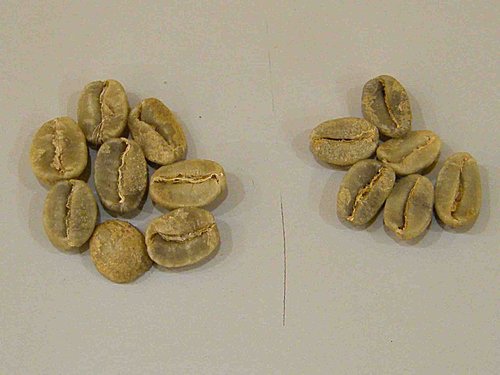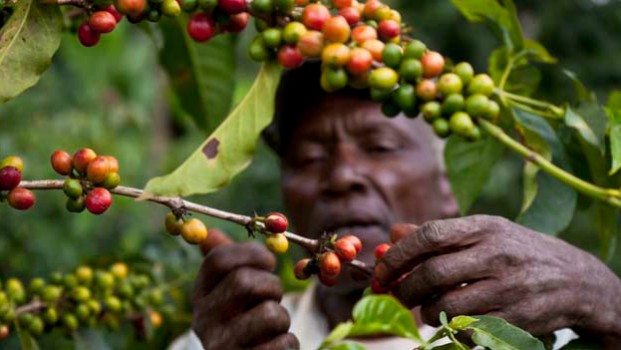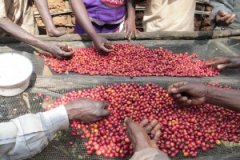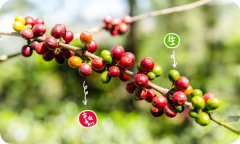Indian Wind stain treatment Coffee Flavor how to introduce the specific process of Wind stain treatment
For professional baristas, please follow the coffee workshop (Wechat official account cafe_style)

[strong flavor of wheat and tea] India Monsooned Malabar AA | Wind-soaked beans (India Monsooned Malabar AA)
Production area: India Malabar
Raw bean treatment method: wind stain treatment method
Grade: AA
Flavor introduction
Aroma of wheat and straw, roasted nuts, dried wood, Nanyang spice, greasy and sticky
About Malabar wind-soaked beans
Indian-style Malabar coffee has been favored by Europeans since the 17th century. This kind of wind-stained coffee is a new flavor created inadvertently. In the 17th and 18th centuries, India shipped coffee beans to Europe by sailboat, which took six months. The raw beans were placed on the bottom of the barn and absorbed the moisture and salty taste of the sea. The raw beans arrived in Europe and deteriorated, and the color changed from dark green to yellowish brown of rice. The acidity of the coffee almost disappeared, but it unexpectedly developed a strong nutty and shell flavor, which tasted full of tea, with a bit of Xuanmi tea flavor. Nordic people like this kind of golden alternative coffee very much. In 1869, the opening of the Suez Canal, coupled with the advent of steamships, shortened the sailing time from India to Europe. However, customers began to complain that Indian coffee was "stale", lost its charming color and flavor, and orders plummeted, and Indian exporters began to study the solution. It was only then that it was found that the time for coffee beans to be shipped to Europe had been shortened by more than half, and the original flavor had been lost before it was ripe. Some smart people think of the salty and wet environment of the Indian sea from late May to September along the coast of Malabar in southwestern India. After several experiments, it is sure enough to produce a tawny coffee without sour taste similar to that of the past, so it is called monsoon bean, or wind-soaked bean.

Indian coffee is originally thick, low and less sour, while wind-stained coffee beans are made from sun-cured beans. All the factories dealing with wind-stained coffee beans face to the west, facing the salty monsoon blowing from the southwest sea. The coffee beans are laid flat in the wind field, the windows are all open, and the wind stains to a certain extent, and then enter the bag, but because the beans will expand a lot in the process, so the coffee beans can not be filled too full, and the coffee bags should not be piled up too dense to avoid mildew and spoilage due to airtight, and from time to time to pour out the coffee beans and replace the sacks. To avoid the breeding of mold is a very time-consuming and labor-consuming project. The weathering period is about 12 to 16 weeks. After ripening, the weevil is fumigated to drive away the weevil. Finally, after manual screening of beans, pick out the failed beans that have not turned golden. After three to four months of wind treatment, the volume of Malaba raw beans expands by one to two times, resulting in a decrease in weight and density.
Indian style-stained Malabar coffee beans, although the beans are fat, they are soft beans that are strong and dry. Because the coffee beans have been exposed to the moist monsoon for a long time, not only the color of the beans has turned yellow and is known as the golden Malaba, the acidity of the coffee itself has also been greatly reduced, and the taste is very special. Wind-soaked beans are drunk individually, with rich aroma of wheat and tea. For hundreds of years, it has been widely used by European coffee manufacturers to prepare mixed coffee beans, which can increase the consistency and tea feel. Make a good espresso.
Important Notice :
前街咖啡 FrontStreet Coffee has moved to new addredd:
FrontStreet Coffee Address: 315,Donghua East Road,GuangZhou
Tel:020 38364473
- Prev

Colombia Coffee Triple Crown Hope Manor-Blue Hill Rose Summer Washing Process Introduction
Weixin Official Accounts cafe_style) Colombia Coffee Hope Manor Blue Hills Geisha/Guixia/Geisha Variety Washing Method (Colombia La Esperanza Gesha Cerro Azul) Country: Colombia (Colombia) Production Area: Valle de Cauca Manor: Cerro Azul
- Next

What is the variety of Mara Kadura coffee beans? Cup test record of orange fruit manor washing treatment method
For the exchange of professional baristas, please follow the coffee workshop (Wechat official account cafe_style) El Naranjo Dipilto. Orange Fruit Manor (Best of Nicaragua winning Manor | Award record: 2016. No. 1) Variety: Maracaturra landowner: Luis Emilio Valladarez Zelaya producing area: Nueva Segovia (New Sagovia) City: Dipilto
Related
- Detailed explanation of Jadeite planting Land in Panamanian Jadeite Manor introduction to the grading system of Jadeite competitive bidding, Red bid, Green bid and Rose Summer
- Story of Coffee planting in Brenka region of Costa Rica Stonehenge Manor anaerobic heavy honey treatment of flavor mouth
- What's on the barrel of Blue Mountain Coffee beans?
- Can American coffee also pull flowers? How to use hot American style to pull out a good-looking pattern?
- Can you make a cold extract with coffee beans? What is the right proportion for cold-extracted coffee formula?
- Indonesian PWN Gold Mandrine Coffee Origin Features Flavor How to Chong? Mandolin coffee is American.
- A brief introduction to the flavor characteristics of Brazilian yellow bourbon coffee beans
- What is the effect of different water quality on the flavor of cold-extracted coffee? What kind of water is best for brewing coffee?
- Why do you think of Rose Summer whenever you mention Panamanian coffee?
- Introduction to the characteristics of authentic blue mountain coffee bean producing areas? What is the CIB Coffee Authority in Jamaica?

